Rare Coins vs Bullion: Numismatics During Inflation - The Modern Advantage
My Guide to Coins vs. Bullion: Navigating Inflation with Modern Numismatics I’m Stephen Pfiel, a numismatic coin dealer with decades of experience sourcing and selling precious metal coins, from American Gold Eagles to rare proof editions. Inflation erodes wealth, and...

My Guide to Coins vs. Bullion: Navigating Inflation with Modern Numismatics
I’m Stephen Pfiel, a numismatic coin dealer with decades of experience sourcing and selling precious metal coins, from American Gold Eagles to rare proof editions. Inflation erodes wealth, and in today’s economy, investors need assets that hold or grow value—making coins and bullion attractive options for those seeking a good investment. That’s where coins vs. bullion comes into play—these are the main categories of precious metal coins investors consider, each offering distinct approaches to precious metals. Bullion, like gold or silver bars, offers a straightforward metal play, while modern numismatic coins (post-1986), such as the 1997 American Eagle Proof or 2011 Canadian Maple Leaf Reverse Proof, blend metal value with scarcity-driven premiums. In this coins vs. bullion guide, I’ll share my insights on their differences, strengths, and how to build an inflation-proof portfolio with Global Coin’s expertise.
Disclaimer: Global Coin is a dealer of precious metal coins and does not provide investment, financial, or legal advice. Any information provided is for informational purposes only and should not be construed as investment advice, especially in relation to finance. Investors should conduct their own due diligence and consult a qualified financial professional before making any investment decisions. Gold and rare coin investments involve risks, and past performance is not indicative of future results

Understanding Coins and Bullion
As a dealer, I’ve seen clients grapple with the choice between coins vs. bullion. How coins are valued depends on their type: bullion coins are valued primarily for their precious metal content and melt value, while numismatic coins are valued for rarity, condition, and historical significance. Bullion—gold or silver bars, rounds, or coins like the 2025 American Gold Eagle—is valued purely for its metal content, with pricing based on current market rates and melt value. Modern numismatic coins, like the 1997 American Eagle Proof or 2011 Canadian Maple Leaf Reverse Proof, combine metal value with collectible appeal driven by rarity, condition, and demand. Their value can vary depending on factors like the mint, the minting process, and collector interest, as the mint and how a coin is minted play a significant role in determining its rarity and desirability. This coins vs. bullion guide breaks down their roles, helping you decide which fits your goals in an inflationary economy.
Inflation: The Wealth Eroder

Inflation shrinks purchasing power, making tangible assets like precious metals essential. I’ve watched clients turn to metals to preserve wealth when cash loses ground. Gold and bullion have historically served as a form of money, helping investors protect their purchasing power during times of inflation. Bullion provides a stable anchor, while modern numismatic coins add growth potential through their collectible premiums. Understanding coins vs. bullion is key to outsmarting inflation’s toll.
Bullion vs. Modern Numismatics: The Contenders
-
Bullion: Gold bars, silver rounds, or coins like the 2025 American Gold Eagle—valued purely for metal content, offering liquidity and reliability. Many bullion coins are available from government mints, providing investors with a wide selection of official legal tender options. When you buy bullion coins, you benefit from their liquidity, standardized value, and market recognition. For silver bullion coins, silver content is a key factor in determining their value. Gold coins, as a specific type of bullion, often feature unique designs and collectible appeal in addition to their gold content.
-
Modern Numismatics: Post-1986 rarities like the 1997 American Eagle Proof or 2011 Canadian Maple Leaf Reverse Proof—combining metal value with scarcity and collector demand. Proof coins are a notable type of collectible coin, produced in limited runs with high-quality finishes, often commanding higher premiums due to their rarity and craftsmanship.
Key Takeaway: Bullion stabilizes wealth; modern numismatic coins amplify gains. This coins vs. bullion guide explores their strengths and weaknesses. Personal preferences play a significant role in choosing between bullion and numismatic coins, as individual goals and tastes influence investment decisions.
Key Differences Between Bullion and Numismatic Coins
Bullion is a metal play—its value tracks the weight of gold or silver, making it a liquid hedge against inflation. I’ve sold bullion to clients seeking simplicity and quick resale. Numismatic coins, however, shine for their rarity and condition. A 1997 American Eagle Proof I handled commanded a premium far beyond its metal content due to its low mintage and MS-70 grade. In the coins vs. bullion debate, bullion offers stability, while numismatics offer growth through collectible value.
Both bullion and numismatic coins can play important roles in diversifying investment portfolios, helping investors manage risk and enhance overall diversification. Some investors seek a middle ground by including both types in their holdings, balancing the benefits of stability and potential growth.
Inflation’s Current Challenge
Inflation’s grip challenges investors—cash loses value yearly, and traditional assets like stocks can falter. I’ve seen clients counter this with precious metals. Bullion holds steady, while modern numismatic coins, driven by collector demand, can outpace inflation’s erosion, making coins vs. bullion a critical decision.
Bullion During Inflation: Strengths and Weaknesses
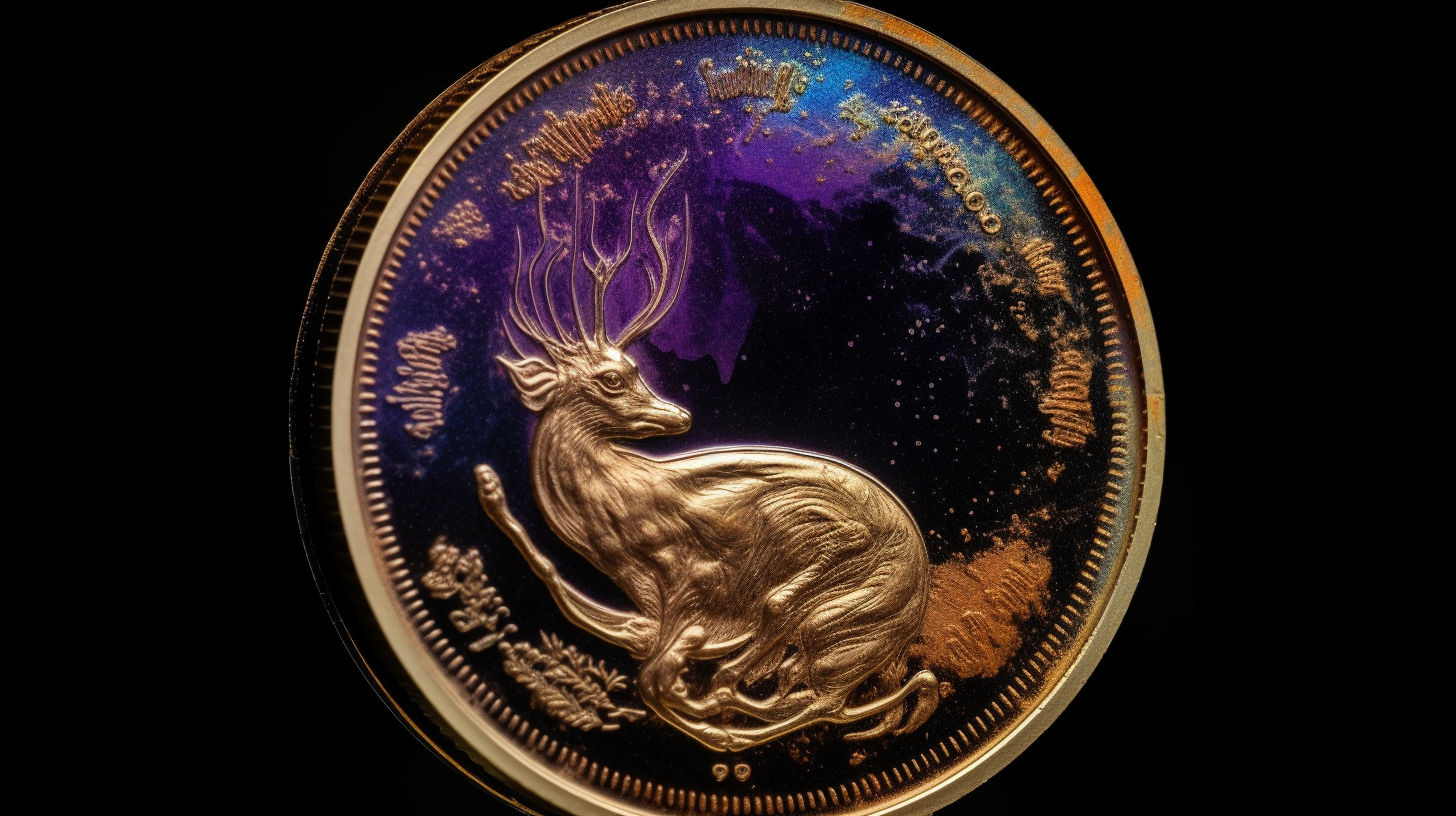
Strengths:
-
Intrinsic Value: Bullion’s metal content ensures stability, a go-to for clients during economic uncertainty. When bullion coins are evaluated, their worth is based on the value of the metal compared to other forms of precious metal investments like jewelry or numismatic coins, which may carry higher premiums or less transparent pricing.
-
Liquidity: A 1 oz Gold Eagle sells quickly, as I’ve facilitated for clients needing fast cash.
-
Proven Hedge: Bullion consistently preserves value, a reliable anchor in turbulent times.
Weaknesses:
-
Market Volatility: ETF trading or central bank policies can temper bullion’s gains short-term.
-
No Premium: Bullion lacks the collectible upside of numismatic coins.
Scenario: A client’s 2025 Gold Eagle holds steady during inflation, preserving wealth but not outpacing it significantly.
Modern Numismatics During Inflation: The Value Amplifier
Strengths:
-
Dual Value: Combines metal content with collectible premiums—e.g., a 2011 Canadian Maple Leaf Reverse Proof I sold soared due to its rarity.
-
Growth Potential: Low-mintage coins, like the 1997 American Eagle Proof, can appreciate faster than inflation.
-
Numismatic coins offer collectible and rare coins with value beyond their metal content, making them attractive for both investors and collectors.
-
Stability: Less tied to metal markets, more to collector demand, offering a buffer against volatility.
Weaknesses:
-
Illiquidity: Rare coins, like a 1997 Eagle Proof, require time to sell, unlike bullion’s quick turnover.
-
Expertise Needed: Valuing premiums takes knowledge, a hurdle I help clients overcome.
-
Higher Cost: Numismatic coins demand more upfront, though many collectors invest for passion too.
Scenario: A 1997 American Eagle Proof’s metal value holds, while its numismatic premium grows, beating inflation’s pace.
Bullion Bars and Rounds: The Overlooked Players
When most investors think of precious metals, bullion coins and numismatic coins usually steal the spotlight. But in my years as a dealer, I’ve seen savvy clients quietly build wealth with bullion bars and rounds—two often-overlooked options that deserve a place in any well-rounded investment portfolio.
Bullion bars are the workhorses of the precious metals world. Typically produced in large quantities by private mints, these bars are primarily valued based on their weight and purity. Whether you’re looking at pure gold, silver, or other precious metals, bullion bars offer a cost-effective way to invest, often carrying lower premiums than gold bullion coins or silver bullion coins. Their straightforward metal value makes them easy to buy, store, and sell, especially for those looking to acquire large quantities of gold and silver without the added cost of collectible appeal.
Bullion rounds, meanwhile, bridge the gap between bars and coins. Minted by private mints, these pieces look much like coins but aren’t legal tender. What sets bullion rounds apart is their blend of metal content and artistic design—many feature intricate motifs and are struck from pure gold or silver, making them attractive to both investors and collectors. While they don’t carry the historical significance or face value of numismatic coins, their appeal lies in their purity, unique characteristics, and often limited mintage.
One of the key differences between bullion bars and rounds is how they’re made. Bars are typically produced using stamping or casting, which allows for efficient production of large quantities. Rounds, on the other hand, are minted using a coining process, resulting in a finish and detail that can rival some collectible coins. This distinction can influence both the metal content and the overall appeal to different types of investors.
From a market liquidity standpoint, both bullion bars and rounds are easy to buy and sell, with strong demand driven by their intrinsic value and the current spot price of gold and silver. They’re a practical hedge against inflation—when paper currency loses value, the price of precious metals often rises, helping to preserve your wealth. For investors who want to diversify beyond bullion coins, adding bars and rounds can provide unique benefits, including lower premiums and flexibility in how you buy and store your metals.
In short, bullion bars and rounds may not have the glamour of rare coins or the instant recognition of gold bullion coins, but they offer a smart, cost-effective way to invest in precious metals. By understanding their unique features and how they fit into your overall strategy, you can make an informed decision that strengthens your portfolio against inflation and market volatility. Whether you’re new to investing or looking to expand your holdings, don’t overlook these essential players in the world of gold and silver.
Market Dynamics and Resale Value
The market for coins and bullion is influenced by various factors, including supply and demand, global economic conditions, and investor sentiment. The resale value of bullion coins is primarily determined by the current market prices of the precious metals they contain. For instance, the value of a gold bullion coin will rise and fall with the price of gold, making it a direct play on the precious metal market.
Numismatic coins, on the other hand, have a more complex resale value. Factors such as rarity, condition, and historical significance play a significant role in determining their market value. A rare numismatic coin in pristine condition can fetch a much higher price than its bullion counterpart, driven by collector demand and the coin’s unique attributes. This makes numismatic coins a potentially lucrative investment for those who understand the market dynamics and can identify valuable pieces.
Bullion’s Inflation Vulnerability
In my experience, coins vs. bullion markets differ sharply. Bullion’s resale value tracks metal markets, offering predictable liquidity—I’ve sold Gold Eagles with tight bid-ask spreads. Pricing for bullion is transparent and based on current market rates, while numismatic coin pricing depends on rarity and demand. Numismatic coins, however, depend on rarity, condition, and collector demand. A 2011 Canadian Maple Leaf Reverse Proof I sourced fetched a high premium at auction due to its MS-70 grade. Understanding these dynamics is crucial for maximizing coins vs. bullion returns.
Bullion’s Inflation Vulnerability
-
Paper Metal Drag: ETFs dilute physical demand, capping bullion’s gains. I’ve seen clients frustrated by this disconnect.
-
Central Bank Influence: Metal sales can suppress prices, a risk numismatics avoid through scarcity.
Head-to-Head: Inflation Face-Off
Verdict: Bullion steadies your wealth; modern numismatic coins grow it faster. This coins vs. bullion guide favors a balanced approach.
Building an Inflation-Proof Portfolio

My strategy for coins vs. bullion portfolios:
-
Diversify: Allocate 50% to bullion (2025 Gold Eagles, Silver Maples) for stability, 50% to modern numismatics (e.g., 2011 Maple Leaf Reverse Proof) for growth.
-
Target Rarity: Focus on post-1986 coins with low mintages, high grades (PCGS MS-70), like the 1997 American Eagle Proof or 2000 Australian Lunar Dragon Proof.
-
Source Wisely: Buy authenticated coins from Global Coin to avoid counterfeits. Store bullion in home safes, numismatics in climate-controlled vaults with insurance.
Recent Case Study:
-
Bullion: A 2023 Gold Eagle held value, matching inflation.
-
Numismatics: A 1997 American Eagle Proof I sold rose 10% in a year, outpacing inflation due to its MS-70 grade.
Building a Coin Collection
Building a collection for coins vs. bullion requires strategy. I advise clients to learn coin history and rarity via resources like the American Numismatic Association. Joining forums connects you with enthusiasts, while trusted dealers like Global Coin offer authenticated coins. Whether you choose bullion for metal value or numismatics for collectible premiums, a well-rounded collection is rewarding and profitable.
Risks and Considerations
Both coins vs. bullion come with challenges. Counterfeits plague numismatic coins—I always recommend PCGS/NGC grading for authenticity. Bullion’s liquidity is a strength, but market swings can affect value. Diversification across both mitigates risks, as I’ve guided clients to balance stability and growth. Timing sales and understanding market trends are key to success.
Conclusion: Outsmart Inflation with Coins vs. Bullion
Inflation’s relentless pressure demands smart assets. In the coins vs. bullion debate, bullion offers stability, while modern numismatic coins (post-1986) drive growth through rarity. Together, they form a powerhouse portfolio. At Global Coin, I curate investment-grade coins and bullion to outrun inflation. This coins vs. bullion guide is your roadmap—act now to build wealth that lasts.
Call to Action: Ready to master coins vs. bullion? Contact Global Coin at shopglobalcoin.com to build an inflation-proof portfolio with exclusive coins and bullion.
Frequently Asked Questions
What’s the difference in coins vs. bullion?
Bullion is valued for metal content, offering stability; numismatic coins add collectible premiums for growth, as explained in this coins vs. bullion guide.
Are numismatic coins better than bullion for inflation?
Numismatics can outpace inflation via rarity-driven gains, while bullion holds steady—combine both for balance.
How do I start investing in coins vs. bullion?
Learn market trends, buy graded coins from dealers like Global Coin, and diversify across bullion and numismatics.
What are top modern numismatic coins?
Coins like the 1997 American Eagle Proof or 2011 Maple Leaf Reverse Proof, prized for rarity, lead in coins vs. bullion growth potential.
Related Articles
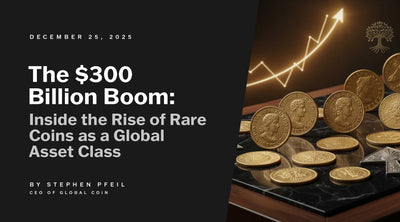
The $300 Billion Boom: Inside the Rise of Rare Coins as a Global Alternative Asset Class
The $300 Billion Boom: Inside the Rise of Rare Coins as a Global Alternative Asset Class In a fi...
Discover More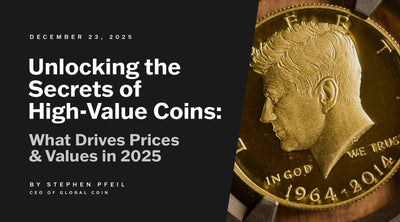
Unlocking the Secrets of High-Value Coins: What Drives Prices and Values in 2025
Unlocking the Secrets of High-Value Coins: What Drives Prices and Values in 2025 In the ever-ev...
Discover More
How to Spot a Counterfeit Proof Coin in the Market
How to Spot a Counterfeit Proof Coin in the Market In the world of numismatics, few things hold ...
Discover More

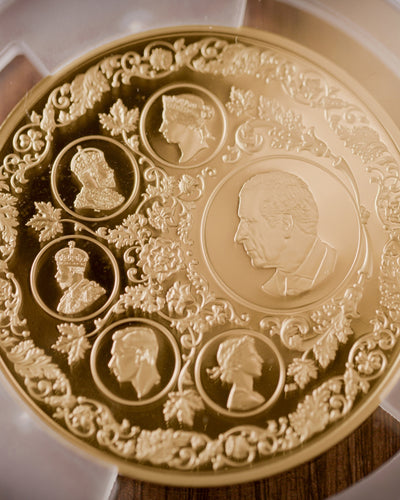
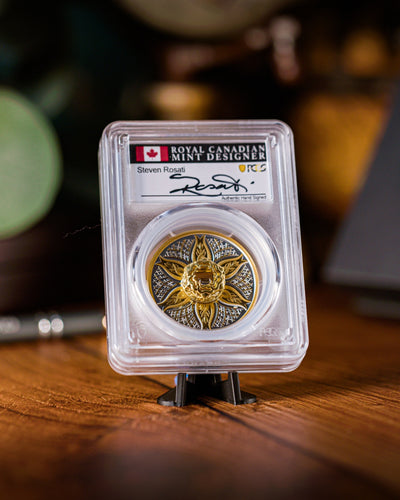
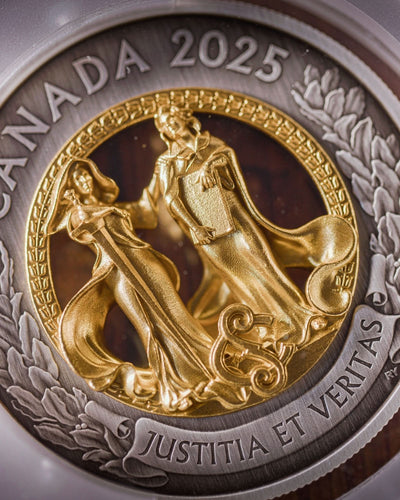
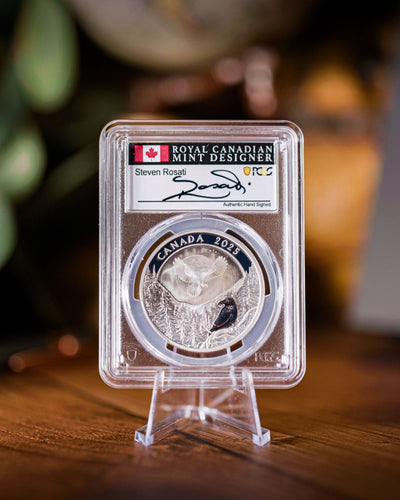
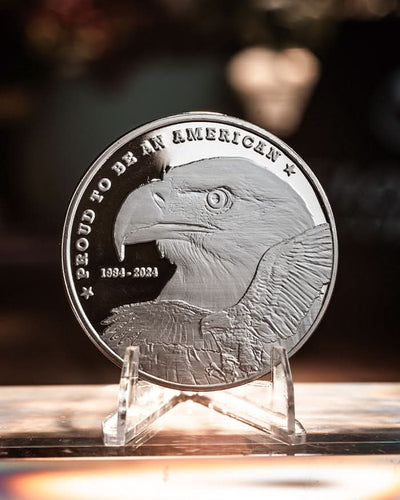
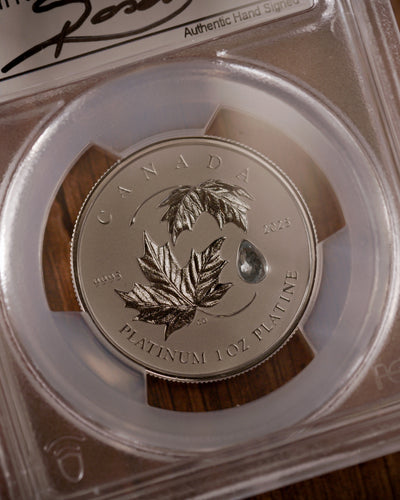
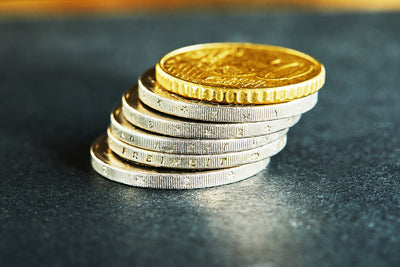
Leave a comment
This site is protected by hCaptcha and the hCaptcha Privacy Policy and Terms of Service apply.